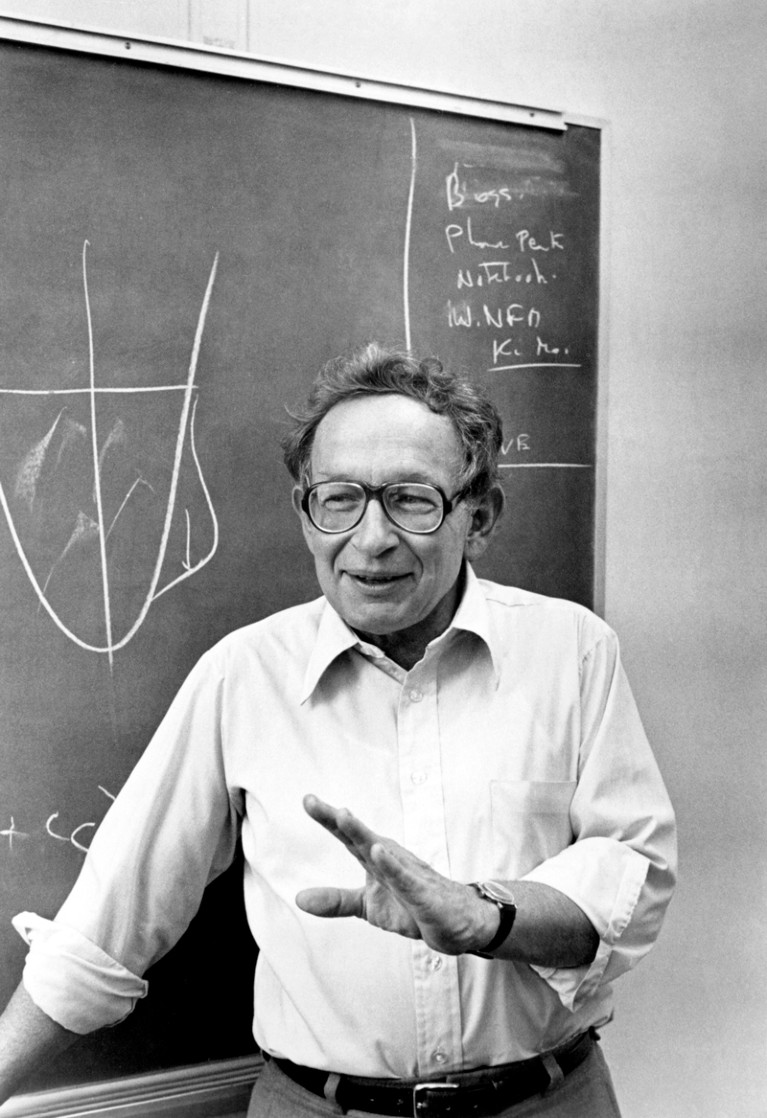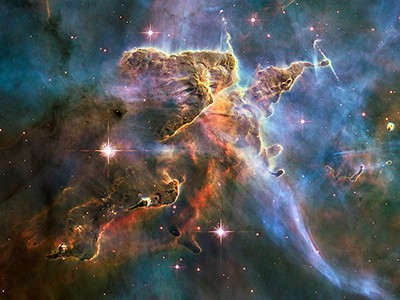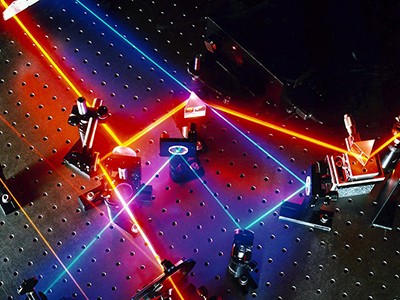
Credit: Emilio Segre Visual Archives/American Institute of Physics/SPL
Philip Warren Anderson, who has died aged 96, led the development of condensed-matter physics. In 1977, he won a share of the Nobel Prize in Physics for his discovery of electron localization, whereby disordered metals become insulators, and for his pioneering work on magnetism. His studies of superconductors led him to propose how the force carriers between subatomic particles, such as photons, acquire mass: the Anderson–Higgs mechanism is now part of the standard model of particle physics.
Quantum physics’ early triumphs persuaded some that advances would derive exclusively from reducing nature to its most fundamental particles. Anderson rejected this view, arguing that the emergent properties that develop when matter comes together are equally significant. He reasoned that, in science, each new level of complexity requires new fields, connecting physics, chemistry, biology, computer science and economics.
Anderson was born in 1923. The son of a plant pathologist, he grew up in Urbana–Champaign, Illinois, and developed an early passion for speed skating. At 16, he went to Harvard University in Cambridge, Massachusetts, where he fell in love with physics. During the Second World War, he worked on radar at the US Naval Research Laboratory in Washington DC. He first learnt about quantum mechanics when a colleague gave him a precious text on it to repay a wartime loan. Returning to Harvard for graduate work, he studied the effects of pressure on the broadening of spectral lines, mentored by John Hasbrouck Van Vleck, one of those with whom he shared the Nobel prize.
From Big Bang to cosmic bounce: an astronomical journey through space and time
In 1949, William Shockley, co-inventor of the transistor, hired Anderson to join the theory group at Bell Telephone Laboratories in Murray Hill, New Jersey. Here, Anderson first focused on magnetism. Quantum mechanics predicts that electrons carry tiny magnetic moments called spin. The attraction of fridge magnets results when spins orient in the same direction. By contrast, the read heads of hard disk drives rely on an antiferromagnet, in which the spin alternates direction on adjacent atomic layers. By combining the effects of electron repulsion and quantum mechanics, Anderson explained how iron atoms become magnetic, and accounted for the interactions that result in antiferromagnetism.
In 1958, Anderson discovered a remarkable parallel between magnetism and superconductivity. Whereas magnets concentrate fields, superconductors expel them, allowing them to levitate. Following John Bardeen, Leon Cooper and Robert Schrieffer’s discovery that superconductivity results from electrons forming Cooper pairs, Anderson realized that these pairs are a kind of pseudospin. In a magnet, fluctuations in the magnetization propagate, forming a spin wave. Cooper pairs are charged, and pseudospin waves cause an electric current that interacts with the electromagnetic fields, which are carried by photons. When Anderson calculated the motion of photons inside a superconductor, he found that they acquired a mass.
Anderson realized that there were still-deeper parallels between superconductivity and particle physics. In 1962, he proposed a mechanism for subatomic force carriers called gauge bosons to acquire mass in a kind of cosmic superconductor, now known as the Higgs field after the British physicist Peter Higgs. Anderson’s work was prominently cited in Higgs’s 1964 paper predicting the existence of the Higgs boson.
Work on semiconductors at Bell Labs led Anderson to propose in 1957 that disorder — such as that caused by defects and impurities in a material — localizes electron waves, producing an insulator. Today, Anderson localization is recognized as a general property of all kinds of waves in disordered media. But the original idea was radical and took two decades and the contributions of many leading physicists to be developed in detail. Anderson also studied spin glasses, a type of random magnet that contains both ferromagnetic and antiferromagnetic interactions. Working with Sam Edwards at the University of Cambridge, UK, he modelled the glass’s capacity to ‘remember’ the history of its environment. The Edwards–Anderson model was an early forerunner of the neural networks used in modern machine learning.
Anderson had an artist’s eye for original interpretation, and worked closely with experimentalists to develop ideas that led to new fields of study. During a year in Japan in 1953, visiting the mathematical physicist Ryogo Kubo at the University of Tokyo, he became a master in the ancient game of Go. Just as he could instinctively see several moves beyond his opponent, he often reached an understanding of physics that was hard for others to grasp. Unusually intuitive for a theoretical physicist, he was able to reduce complex problems so they would succumb to a minimum of mathematics.
To the many younger physicists he mentored, with whom he generously shared inspiring ideas, he was something of a guru. He would invite them, and their families, for dinner, developing lasting friendships. He had a passion for the outdoors, spending Sundays gardening and clearing the woodland around his house.
From 1967 to 1975, Anderson was a visiting professor at Cambridge, where he was a close associate of Nevill Mott, the third of the 1977 Nobel prizewinners. In 1975, he took up a position at Princeton University in New Jersey, where he devoted much of his research to high-temperature superconductivity (discovered in 1986 by Georg Bednorz and Alex Müller).
Anderson’s resonating valence bond (RVB) theory, proposed in 1987, once again borrows ideas from magnetism, positing that high-temperature superconductivity results from the injection of charge into an insulating quantum spin liquid. High-temperature superconductivity has still not been achieved, but many think that RVB theory contains the seeds of how it might be. Although Anderson has left us, his ideas are still many moves ahead.


 A history of substance
A history of substance
 From Big Bang to cosmic bounce: an astronomical journey through space and time
From Big Bang to cosmic bounce: an astronomical journey through space and time
 David J. Thouless (1934-2019)
David J. Thouless (1934-2019)
 Shoucheng Zhang (1963–2018)
Shoucheng Zhang (1963–2018)








